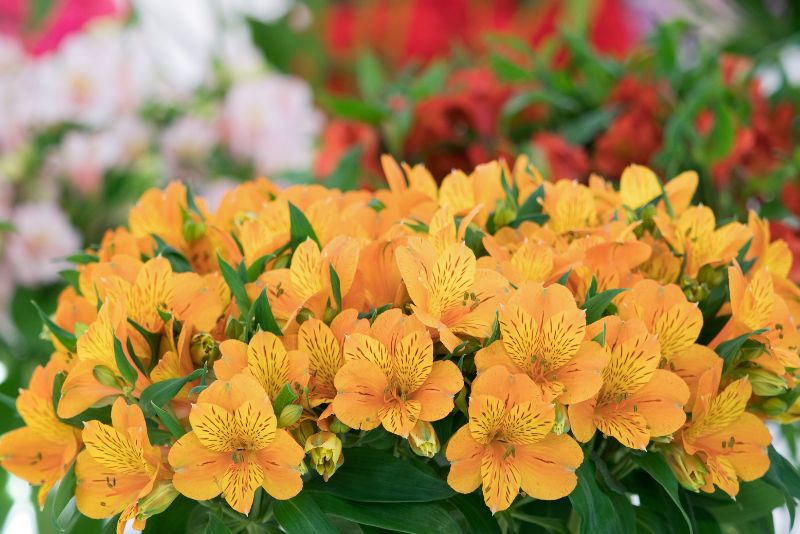Plant, Grow, and Nurture the Timeless Beauty: A Guide to Alstroemeria
Hailed for their vibrant blossoms and resilient nature, Alstroemeria, commonly known as Peruvian lilies or lily of the Incas, have long captivated gardeners and flower enthusiasts. If you’re looking to grace your garden with a splash of color that’s reliably beautiful and surprisingly easy to care for, look no further. In this in-depth guide, we’ll explore all you need to know about cultivating the enchanting Alstroemeria, from the planting process to fostering its growth and maintaining its health.
Planting Alstroemeria

The first step towards a flourishing Alstroemeria bed is the planting phase. This stage is crucial for establishing the right foundation for your plants to grow strong.
Choosing the Right Location
Alstroemeria thrives in well-drained soil with plenty of sunlight, but it’s also adaptable to various conditions. Select a spot that receives at least 6 hours of sun a day and provides ample space for the plant’s root spread.
Soil Preparation and Planting Tips
Prepare the soil by loosening it to a depth of about 12 inches. Alstroemeria prefers slightly acidic soil with a pH of 6.0 to 6.5. Mix in compost or well-rotted manure to improve soil structure and fertility. When planting, space the rhizomes about 18 inches apart and plant them at a depth of 6 inches.
Watering and Initial Care
After planting, water the Alstroemeria thoroughly to settle the soil and hydrate the roots. Keep the soil evenly moist, especially during dry spells. Mulching around the plants will help retain moisture and suppress weeds.
Growing Alstroemeria
With the initial planting out of the way, it’s time to focus on the continued growth of your Alstroemeria.
Sunlight and Temperature Requirements
Alstroemeria is a sun-loving plant, but it can also tolerate partial shade. It grows best in temperatures between 50-80°F (10-27°C). Protect from extreme hot or cold weather by mulching around the plants in summer and providing additional insulation in winter.
Fertilization and Maintenance
In the spring, as soon as the plants begin to grow, provide a balanced fertilizer or a high-potash feed to encourage flowering. Maintain a layer of mulch to keep the roots cool and retain moisture. Regular weeding and watering are essential maintenance tasks.
Managing Pests and Diseases
Alstroemeria is generally pest and disease resistant, but they can occasionally fall prey to slugs, snails, and aphids. Handpick pests or use organic deterrents to keep them at bay. Treat any diseases with proper fungicides if necessary, but always ensure to follow the instructions closely.
Caring for Alstroemeria
Caring for your Alstroemeria in the right way will not only ensure their health but also promote robust growth and prolific flowering.
Pruning and Deadheading
Prune the stems back to the ground after the first frost to encourage new growth the following spring. Regular deadheading, the removal of spent flowers, prolongs the blooming season and redirects the plant’s energy into growing more flowers rather than setting seeds.
Dividing and Propagating
Alstroemeria can become overcrowded over time. To rejuvenate them, divide the plants every 2-3 years in the spring. Use a spade to dig up the clump and divide the rhizomes with a sharp, clean knife. Replant the healthy rhizomes in prepared soil, and water thoroughly.
Winter Care and Protection
In areas where winters are harsh, protect Alstroemeria by mulching the bed with a generous layer of straw or leaves. This will help insulate the plants from the cold and prevent the roots from freezing.
Conclusion
The Alstroemeria is a treasure to cultivate in any garden. By following these detailed steps for planting, growing, and nurturing these blooms, you’re well on your way to becoming a successful Alstroemeria caretaker. Remember, the key to a vibrant garden lies not just in the cultivation of the plant, but also in the enjoyment it brings. As you witness the timeless beauty of Alstroemeria unfolding in your garden year after year, take a moment to appreciate the simple pleasure of growing flora that connects us to the wonders of nature. Happy gardening!






